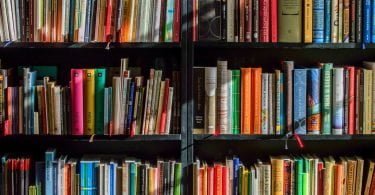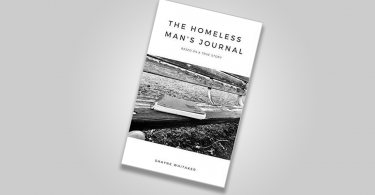When you’re talking about the literary culture you’ve been brought up in, it can be easy to reel off a list of what might be called iconic characters. Even if you’ve never picked up Pride and Prejudice, you’ll likely be familiar with the brooding Mr Darcy. Romeo and Juliet epitomise the fated love story. Young people today have had their childhoods shaped by the stories of Harry Potter, ‘the boy who lived’.
But what about literature from further afield? For Kettle’s America season, I was interested to find out which characters from American literature had made a lasting impression on our writers. The responses were varied, from heroes to villains to alter-egos, and even one that doesn’t speak (guess who?), ranging from classics to contemporary novels, proving the diversity of American literature has been embraced in the UK-a great example breaking down cultural and national boundaries through art).
So (X Factor voice) in no particular order, here are the best protagonists from American literature, selected by Kettle writers and editors.
Patrick Bateman, American Psycho by Bret Easton Ellis
Perhaps a somewhat unconventional choice, Bateman sees himself as a serial murderer, fantasising about, and perhaps committing (it’s left uncertain) sadistic violent crimes. Not your typical ‘favourite character’, then- he won’t steal your heart, and you won’t want to be his bestie. But it’s easy to see how a character with such an unnerving yet intricate psychology could capture the interest of a reader, especially since the novel is told from Bateman’s point of view, meaning readers play a part in attempting to navigate the uncertainties of his mind.
Yossarian, Catch-22 by Joseph Heller
As a captain in the air force, Yossarian must deal with the paradoxical ‘Catch-22’ measures of the military that make it impossible to leave. As a character, he acts as an exploration of a double bind or logically irresolvable problem. However, eventually realising that he can escape the military and the Catch-22 plots, Yossarian is perhaps a character to be admired
Holden Caulfield, The Catcher in the Rye by J.D. Salinger
Holden embodies teenage angst and a distrust of the adult world, epitomised by his aversion to anything ‘phony’. His coping method of choice is to run away and spend a week drinking and meeting girls. Some might see this as an all too clichéd depiction of teenage rebellion, but Kettle writer Chloe suggests this ‘lack of appeal’ may be ‘deliberate’- perhaps a way for Salinger to show that the difficulties of adolescence do not always make for charming teenagers. And let’s not forget, Holden’s caring relationship with his younger sister Phoebe makes him a character that stands for the importance of family and childhood innocence.
Lestat, The Vampire Chronicles by Anne Rice
‘Vamp-lit’ (is that a thing? It should be) is undoubtedly one of the defining genres of YA fiction in recent years. But, before Edward Cullen, there was Lestat de Lioncourt. Lestat embodies not only unique vampire qualities, such as telepathy and heightened sensation, but also a somewhat philosophical yearning for humanity, creating a compelling protagonist.
Moby Dick, Moby Dick by Herman Melville.
Okay, this might seem like a slightly odd choice- it’s a whale (and not a magical talking whale, either). But maybe Moby Dick can be appreciated more for his role in the novel. The sailors’ revenge quest, of which Moby Dick is the target, allows the novel to explore thought-provoking themes, from nature and the ocean itself, to broader questions of God, perception and knowledge.
Rhett Butler, Gone with the Wind by Margaret Mitchell
Everyone loves a bad boy, right? Kettle’s video editor, Silvia, pinpoints Rhett as the character who sparked her ‘fascination with rogues and scoundrels’. A professional gambler enamoured with female protagonist Scarlett O’Hara, yet with a strong yearning for acceptance, Butler has a depth of character that goes beyond the typical loveable rogue.
Jay Gatsby and Nick Carraway, The Great Gatsby by F. Scott Fitzgerald
There’s no doubt these are controversial choices. One person’s hopeless romantic is another person’s deluded dreamer, and with James Gatsby, it really could go either way. Nick Carraway, the somewhat cold, judgemental and untrustworthy narrator, is perhaps not the most captivating character. Kettle writer Bridie, sees these characters as iconic American protagonists, not because of their individual character, but because they ‘epitomise the American Dream’ and ‘the bittersweet love/hate of the 1920s’
John Coffey and Paul Edgecombe, The Green Mile by Stephen King
Working as a block supervisor on death row, Edgecombe discovers that one of the prisoners, John Coffey, has incredible powers of healing. Edgecombe also discovers Coffey is innocent, and wants to help him. Edgecombe and Coffey, then, are a duo that intertwine ideas of the supernatural with a much more human idea of an unusual friendship.
Sal Paradise and Dean Moriarty, On the Road by Jack Kerouac
If you’re reading American literature to get a real sense of a distinct American culture, Paradise and Moriarty might be the pair to turn to; Moriarty’s free-spirited thirst for adventure and experience resonates the Beat Generation movement in American post-World War 2 literature. What’s more, their travels, detailed in the novel, are mainly autobiographical, Sal Paradise being an alter-ego for Kerouac himself.
Henry Chinaski, alter-ego of Charles Bukowski
Bukowski’s alter-ego appears many of his novels and short stories, and is a character through which Bukowski raises social and political concerns whilst also exploring the individual, as Chinaski must confront poverty, sexuality, the act of writing and the effects of alcohol.

Willy Loman, Death of a Salesman by Arthur Miller
‘A truly tragic character’, according to Kettle’s film editor, Emily. The protagonist of Miller’s play is not always a particular likeable character, given his obsession with popularity and success, and the pressure he puts on his sons to follow his footsteps in business. Yet the tragedy Emily describes lies in Loman’s suicide, which seems to be Miller’s way of shifting at least some of the blame towards the expectations arising from the ‘American Dream’, rather than Loman himself, showing how the pressure to succeed in the American white-collar culture can cause personal instability and family breakdown.
Raoul Duke, Fear and Loathing in Las Vegas by Hunter S. Thompson
Yet another alter-ego for the author, Raoul Duke is a hedonist, usually always intoxicated by drugs and alcohol- think a contemporary American Dorian Gray. Despite his somewhat ‘anti-hero’ status as a violent substance abuser, Duke is driven by the idea of finding a counterculture to the American dream. If Willy Loman is a victim of the American dream, perhaps Duke can be admired for his shameless rebellion against it.
Scout, To Kill a Mockingbird by Harper Lee
A real feisty female character, Scout is hot-headed and desperate not to be singled out from her brother because of her gender- Quote Kettle writer Becky, ‘everyone loves a spunky lil kid’. At times, this becomes a temper that often results in physical violence, but over the course of the book, readers see Scout mature as she begins to adopt her father’s compassionate approach, giving the novel a strong personal, coming-of-age element alongside its themes of injustice.
So, those are our favourite characters from American literature…But who would you add, or want to see pushed off the list? Have your say in the comments below!





















